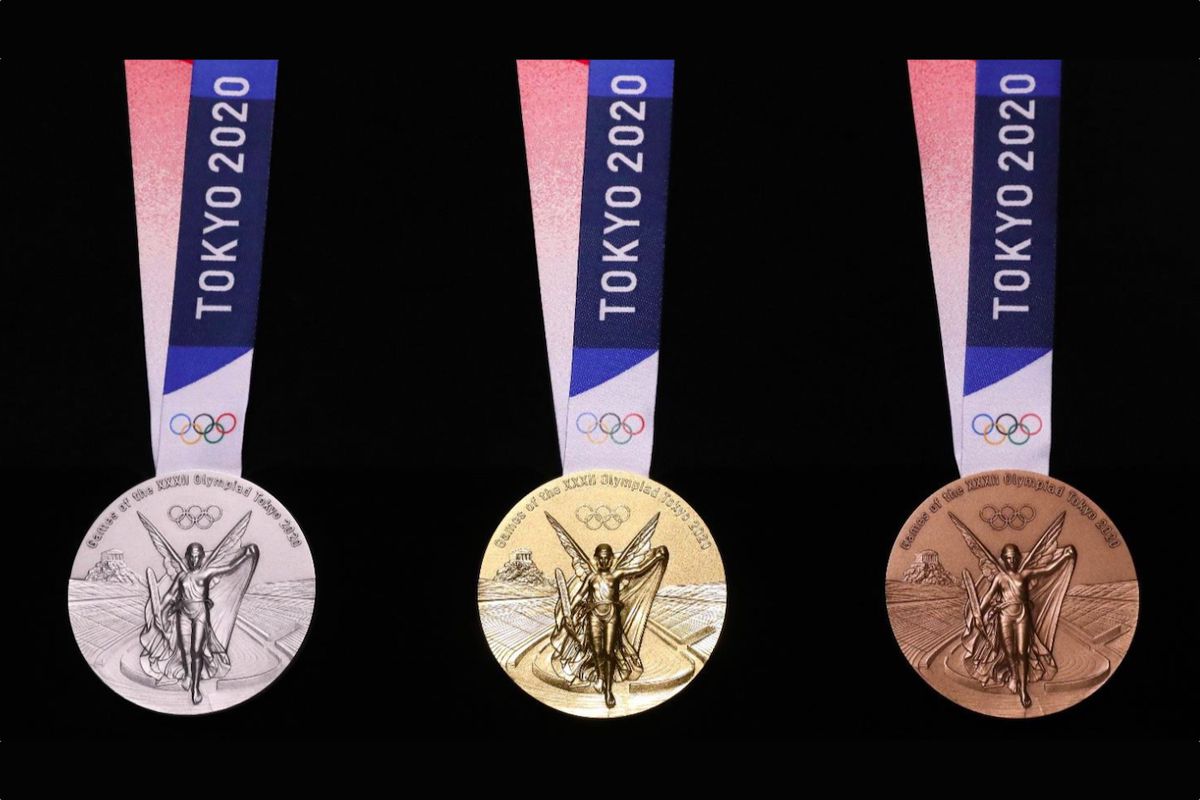
Japan, the host country of the 2020 Olympic and Paralympic Games, has promised to deliver "the most innovative Games ever organized." On July 24, 2019, a year before the competition begins in Tokyo on July 24, 2020, the Olympic Committee unveiled its first ingenious idea — medals made using precious metals extracted from discarded electronics.
The idea to strip the small quantities of gold, silver, platinum, and nickel from old devices was first proposed in 2016 by a group of young Japanese environmentalists. The students wanted to raise awareness of the amount of electronic waste generated by the country's tech-loving residents, who are notorious for replacing gadgets frequently. Japanese citizens toss an estimated 650,000 tons of small electronics and home appliances every year, only about 100,000 tons of which are recycled.

Eager to help the environment and raise awareness of the issue, the Olympic Committee launched the “Everyone’s Medal” program in February 2017. The campaign encouraged citizens to drop off unused gadgets at one of Japanese cellular giant NTT Docomo's 2,400 stores, or at locations set up by Japan's Environmental Sanitation Center.
Since each gadget contains just traces of the precious metals, the organizers needed millions of devices to accumulate the 8 tons of material needed to craft the 5,000 Olympic and Paralympic medals. However, they had nothing to worry about. By the time the collection drive ended in March 2017, Japanese residents had donated an astounding 78,895 tons of gadgets, including 6.21 million smartphones. The haul yielded the officials 70 pounds (32 kilos) of gold, 7,716 pounds (3,500 kilos) of silver, and 4,850 pounds (2,200 kilos) of bronze — more than enough to make every medal.

Revealed on July 24, 2019, the medals, which measure 85 mm in diameter, are designed by Osaka-based graphic artist Junichi Kawanishi. They feature the five interlocking Olympic rings, the official name of the games, and the Greek goddess of victory Nike in front of the Panathenaic stadium — the venue of the first Olympics.
In keeping with the International Olympics Committee (IOC) regulations, each gold medal is crafted from pure silver with 6 grams of gold plating. Though the IOC guidelines only require the silver medal to contain 92.5 percent of the metal, thanks to the successful recycling effort, the Tokyo 2020 medals are 100 percent pure silver. The bronze medal comprises a red brass alloy made up of 95 percent copper and 5 percent zinc. The medals will be placed in a circular case made from Japanese ash wood and accompanied by unique ribbons, which were inspired by traditional Japanese patterns and kimono-layering techniques.

The Olympic Committee hopes the Tokyo 2020 medals will help raise awareness of the alarming increase in electronic waste — not just in Japan but worldwide — and cause consumers to rethink upgrading devices unnecessarily. As Japan's three-time Olympic gold medal-winning gymnast Kohei Uchimura succinctly put it: “Tokyo 2020 Olympic and Paralympic medals will be made out of people’s thoughts and appreciation for avoiding waste. I think there is an important message in this for future generations.”
Though Japan is the first Olympic host country to make all the medals using metals from discarded electronics, it is not the first to think of the idea. That credit goes to Rio de Janeiro, Brazil which crafted about 30% of the silver and bronze medals for the 2016 Summer Olympics from recycled materials.
Resources: theverge.com,digitaltrends.com, fox6now.com
